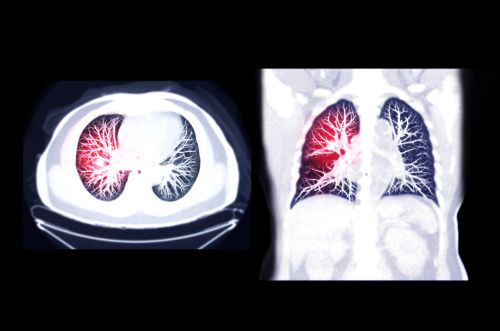Washington, D.C. Pulmonary Embolism Lawyers

Blood clots can be very dangerous, particularly when they dislodge and travel throughout the body. Medical professionals are trained to recognize the risks and symptoms of blood clots and take all measures to prevent them from forming and harming patients. When medical staff fail to diagnose or treat blood clots properly, patients are at risk of suffering a deadly pulmonary embolism.
What Is a Pulmonary Embolism?
Pulmonary embolisms are sudden blockages in the lung’s arteries caused by a deep vein of blood clots that travel to the lung from the legs or arms. Blood clots are clumps of blood that have transformed into a gel-like state rather than a liquid. In most instances, blood clots are a necessary part of the healing process to reduce or prevent blood loss during an injury.
Blood clots can also form when blood flow becomes “sluggish,” largely during extended periods of inactivity. When clots become too large, they can break apart and travel through the bloodstream to the heart and enter the lungs, creating pulmonary embolisms that cause catastrophic injuries. When blood clots are large enough to block blood flow to the lungs completely, it may result in death.
Risk factors that can increase a person’s risk of developing a pulmonary embolism include:
- Family history of blood clots or pulmonary embolism
- Medical conditions, such as heart disease, cancer, lung disease, COVID-19
- Pregnancy
- Prolonged periods of inactivity
- Obesity
- Smoking
- Supplemental estrogen
- Surgical patients
What Injuries Are Caused by Pulmonary Embolisms?
Pulmonary embolisms are dangerous and can block blood flow and cause severe low blood oxygen levels that damage the body’s vital organs. Pulmonary embolisms can lead to severe medical complications, such as the following:
- Permanent lung damage: When a clot is large enough to prevent blood from reaching the lungs, it may cause serious and irreversible damage.
- Hypoxemia: Pulmonary embolisms can create a severe drop in blood oxygen levels, known as hypoxemia, resulting in headaches, shortness of breath, and decreased heart or brain function.
- Organ damage: The body’s organs require optimum oxygen levels to function correctly. Without oxygen, organ damage can begin within minutes of the first sign of symptoms.
- Death: Blood clots and pulmonary embolisms are often deadly. Nearly one-third of patients die of cardiac arrest before pulmonary embolisms are discovered, as symptoms are often non-specific and progress quickly to an emergency.
What Are the Symptoms of a Pulmonary Embolism?
The signs and symptoms of a pulmonary embolism vary, depending on whether a patient has an underlying health condition or risk factors and the size of the blood clot. According to the American Lung Association (ALA), symptoms usually appear suddenly and may include:
- Back pain
- Blue tint to the lips or nails
- Chest pain
- Cough
- Difficulty breathing
- Dizziness
- Irregular heart rate
- Leg pain or swelling
- Profuse sweating
- Red skin or dark red veins
- Spitting up blood
- Shortness of breath
How Are Blood Clots Diagnosed and Treated?
Blood clots can be diagnosed through a physical exam, blood tests, ultrasound, venography, or MRI scan, which can reveal blocked veins. Once identified, the doctor can treat DVT by using anticoagulants, or blood thinners, to keep the blood clot from growing and allowing it to break down naturally. Many of the same tests can be used to identify a pulmonary embolism, though other tests, such as chest X-ray, CT-scan, or pulmonary angiogram of the lungs if the embolism has reached an advanced stage.
Blood clots can be treated with blood thinning medications to reduce the clot’s size or surgery to remove clots that have advanced into the lungs. Treatment may also include medications or medical equipment, such as compression stockings, to help prevent blood clots from forming, particularly for patients with a family history or multiple risk factors.
How Do I Prove My Pulmonary Embolism Is Due to Medical Malpractice?
Blood clots and pulmonary embolisms can also develop through medical errors or negligence, such as failing to take precautionary measures during or after procedures with an associated risk of blood clots. The most common negligent act is the failure to prescribe prophylactic anticoagulation medication, including after patients are discharged from the hospital. Other situations that may be considered medical malpractice include:
- Delayed diagnosis, misdiagnosis, or failure to diagnose pulmonary embolism.
- Failure to understand the patient’s history and risk factors for pulmonary embolism.
- Failure to treat or use anticoagulants.
- Not prescribing appropriate medications or medical equipment, such as compression socks.
- Ordering incorrect testing.
- Lung damage, cardiac arrest, brain injury, organ damage, or spinal cord injury due to pulmonary embolism following invasive or surgical procedures.
- Malfunctioning medical equipment or misuse.
- Wrongful death.
Most clots and pulmonary embolisms can be preventable if a patient’s history is thoroughly reviewed, proper medication is provided to prevent clots from developing, and test results are properly followed up. When medical professionals fail to act or act incorrectly, patients can die.
If you suspect that medical malpractice led to your pulmonary embolism or the death of a loved one, it is crucial to consult with an experienced Washington, D.C. medical malpractice lawyer. Medical malpractice cases are complex and require the assistance of medical experts who can testify with certainty of the symptoms, diagnosis, and treatment of pulmonary embolisms and that inappropriate actions lead to your injury.
What Compensation Can I Seek for My Misdiagnosis or Mistreatment?
Patients and surviving family members may be entitled to seek compensation from the hospital, doctors, specialists, and other healthcare professionals for the injuries or death resulting from medical negligence. Compensation is typically based on a combination of economic and non-economic damages, such as:
- Chronic pain
- Disability
- Emotional distress
- Loss of companionship
- Lost wages and future earning capacity
- Medical expenses
- Ongoing medical care
- Pain and suffering
- Permanent catastrophic injuries or disabilities
- Wrongful death and funeral expenses
What Is the Statute of Limitations for Filing a Medical Malpractice Claim?
In Washington, D.C., the statute of limitations for filing a medical malpractice lawsuit is three years from the date of the injury or the date the injury or symptoms were first discovered.
Why Should I Hire the Law Offices of Dr. Michael M. Wilson, M.D., J.D. & Associates?
The Law Offices of Dr. Michael M. Wilson, M.D., J.D. & Associates focuses on complex medical malpractice cases, catering to patients across the Washington, D.C., region. Principal Attorney Michael Wilson, Esq. is at the forefront of our practice, who is both a lawyer and a physician. Dr. Wilson’s unique background equips him to vigorously pursue medical malpractice claims on behalf of individuals and families impacted by the negligence of healthcare professionals. His reputation extends far beyond Washington, D.C.; he is recognized for his adept handling of intricate cases nationally and internationally.
In contrast to conventional personal injury law firms, our approach distinguishes itself by eliminating the need for third-party medical expertise. Dr. Wilson’s dual qualifications enable him to dissect complex legal and medical issues concurrently, mitigating the risk of miscommunication often encountered when lawyers consult with external experts. This integrated approach frequently yields advantageous outcomes for our clientele.
With over 30 years of legal experience, Dr. Wilson’s comprehensive knowledge and medical proficiency have resulted in an impressive track record, securing over $100 million in compensation for patients and their families.
Our Washington, D.C. Pulmonary Embolism Lawyers at the Law Offices of Dr. Michael M. Wilson, M.D., J.D. & Associates Help Clients Suffering Blood Clot Injuries
If you or a loved one has suffered serious injury or death due to a preventable blood clot, our Washington, D.C. pulmonary embolism lawyers at the Law Offices of Dr. Michael M. Wilson, M.D., J.D. & Associates will help. Call us today at 202-223-4488 or contact us online to schedule a free consultation. Located in Washington, D.C., we serve clients in Northern Virginia and Maryland.














